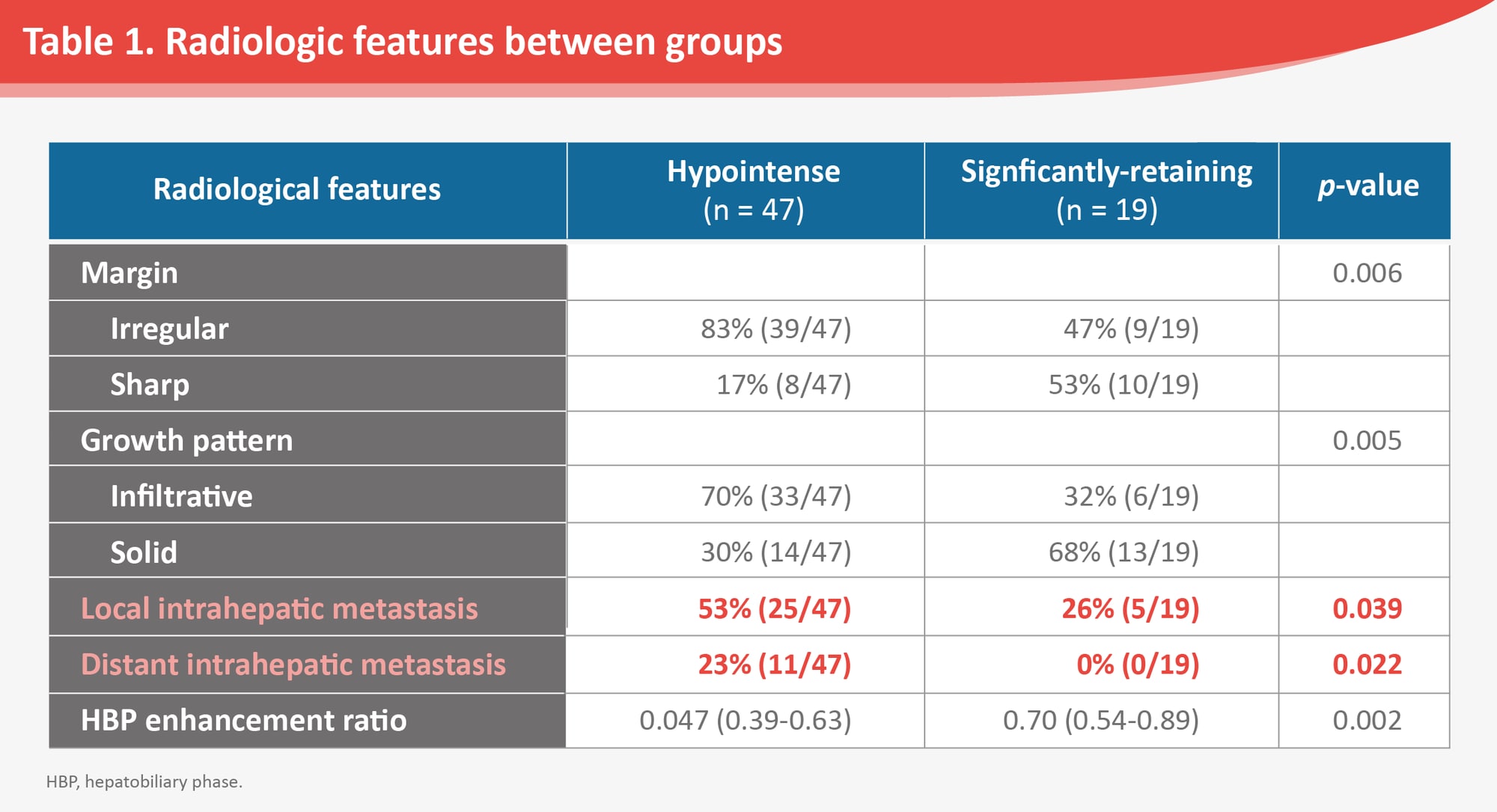Intrahepatic mass-forming cholangiocarcinoma: is there additional prognostic value in using Gd-EOB enhanced MRI?
Key message: Gadoxetic acid-enhanced MRI identifies hypointense and significantlyretaining subtypes of intrahepatic mass-forming cholangiocarcinomas, with the hypointense subtype associated with more frequent intrahepatic metastases and an infiltrative growth pattern.
This study explores the prognostic value of enhancement patterns in intrahepatic mass-forming cholangiocarcinomas (IMCCs) using hepatobiliary phase (HBP) gadoxetic acid-enhanced MRI. The research retrospectively analyzed 66 patients with histopathologically confirmed IMCCs who underwent preoperative Gd-EOB-enhanced MRI. Based on areas of intermediate signal intensity, lesions were classified into two categories: hypointense (0-25% retention) and significantly-retaining (>25% retention). The study compared clinical, radiological, and prognostic features between these groups.
Results indicated that 73% of lesions were hypointense, associated with higher rates of local and distant intrahepatic metastases (p = 0.039 and p = 0.022) and an infiltrative growth pattern (p = 0.005) (Table 1). Lymph node metastasis emerged as an independent predictor of poor RFS (p = 0.001). The study concludes that the hypointense IMCC subtype correlates with more frequent intrahepatic metastases and an infiltrative growth pattern, suggesting potential tumor aggressiveness, but this did not significantly affect survival outcomes after primary resection.

References:
- Sebastian Halskov et al. Intrahepatic Mass-Forming Cholangiocarcinoma: Is There Additional Prognostic Value in Using Gd-EOB Enhanced MRI? Cancers 2024, 16, 1314.
IMCC: https://pubmed.ncbi.nlm.nih.gov/38610992/


